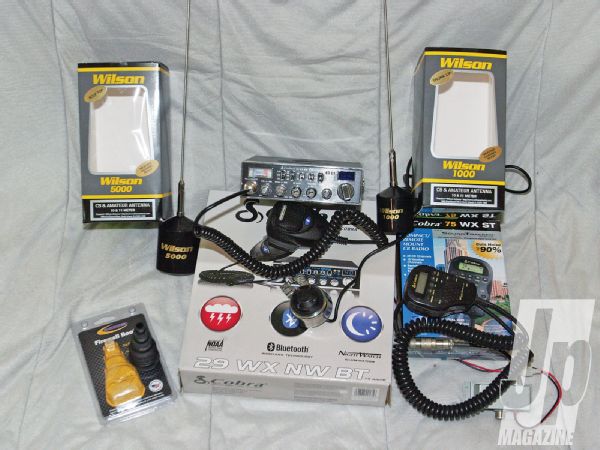
 Pete Trasborg
Brand Manager, Jp
Pete Trasborg
Brand Manager, Jp
It's hard to believe that only 20 years ago movies abounded with scofflaws avoiding the fuzz by using Citizens' Band radios and we thought it was far-out. Today, all of us have used a CB and most of us have one installed in our Jeep. It's one of the most prevalent safety tools in an off-roader's satchel of tricks.

There is no doubt in our minds that the CB is useful. It isn't the best thing we can use, though. Cell phones can call emergency services directly, and HAM radios have a much better range. But if you get out of range of a tower, your fancy phone is just an expensive paperweight that doesn't like water. And that far-reaching HAM radio is most useful only if there is someone on the other end to hear you, and most of the time that means bringing a friend with a HAM radio as well.
On the other hand, most off-roaders have CBs, every big-rig driver has a CB, and most law enforcement bases monitor channel 9 or 19 for emergency calls. The sheer number of CB users means that the CB radio is still number one for trail communication, but if you don't have it installed correctly, you aren't making the most of what you have. We are here to help you hear and be heard.
Over the years we've used just about every cheap or easy-to-get CB you'd like to know about. And we've had every one die a premature death. The one thing we've learned is that most cheap CBs don't like the dust and mud we subject them to. Much as it hurts our skinflint hearts, we've come to always turn to Cobra Electronics for our CB needs. In life as in CBs, you get what you pay for. Whether that money is getting you pixie dust, children's dreams, or just normal high-grade components and an attention to quality control, Cobra is our choice. In this article, we'll show you how to install our two favorite units-the 29 and the 75-in various Jeeps.
The same, unfortunately, goes for antennas. Most antennas on off-road Jeeps are expendable. It isn't a matter of if we break the antenna on a tree somewhere-it is a matter of when. Sure, we use the cheapie antennas on Jeeps we are really going to abuse. In our experience, however, the cheapies just don't get out as far as a good antenna will even if they are both tuned to the same specs. So, we run Wilson antennas on our Jeeps that are staying around a while and not turning into a crumpled ball of metal. We have some preferences in antenna models and mounting locations that we've found get further out and last longer in real world off-road situations.
Federal law now limits the output of CB radios to a mere 4 watts, ostensibly to prevent interference with other electronics. So, the out-of-the-box capability of any CB is entirely up to how you install it, tune it, and what antenna you run with it.
PhotosView Slideshow







